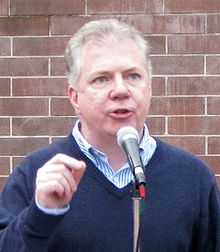Well, that didn’t last long.
Barely two weeks ago, I wrote about a radical proposal from a Seattle committee that would allow single-family homes virtually anywhere in this city of neighborhoods to be torn down and replaced with multi-family units. The upzoning proposal, intended to generate more housing at lower cost, was staunchly backed in its entirety by liberal Mayor Ed Murray and, it seemed, a majority of the liberal City Council, whose approval would be needed for zoning-rule changes. I suggested that Seattle, a city of neighborhoods, might end up looking like no-zoning Houston, and wondered if a homeowner revolt here might ensue.
It did.
Last week, Murray completely bailed on the Seattle upzoning bid. “I will no longer pursue changes that could allow more types of housing in 94 percent of single-family zones,” he said in a statement that killed the proposal as surely as the chances of the faltering Seattle Mariners making the baseball playoffs this year.
Murray blamed “sensationalized reporting by a few media outlets” for fanning a local uproar. Perish the thought that a dumb policy proposal potentially affecting almost every homeowner should be blamed.
In the second year of his four-year term as mayor, Murray doesn’t have to face the voters again until 2017. But City Council members have to a lot sooner–like tomorrow, when nonpartisan primaries are held. Several council members reported getting pushback from their own supporters at fundraisers, never a good sign.
I thought the implosion of this proposal was the inevitable outcome, although perhaps not this quick. But the interesting element to me was how, in the one of the nation’s whitest big cities, Murray and his supporters had tried to turn this proposal into some kind of reparations for racial discrimination occurring long before I became New To Seattle. “We’re dealing with a pretty horrific history of zoning based on race and economics,” Murray declared. Here’s how the panel he appointed, the Housing Affordability and Livability Advisory Committee, explained its justification for upzoning: “Seattle’s zoning has roots in racial and class exclusion and remains among the largest obstacles to realizing the city’s goals for equity and affordability. In a city experiencing rapid growth and intense pressures on access to affordable housing, the historic level of single-family zoning is no longer either realistic or acceptable.”
As a student of history, I thought there was way off. Seattle has plenty of bad racial history to account for–hell, there’s still a Confederate war memorial from the 1920s here sporting the hated Confederate flag. But zoning wasn’t part of it.
Seattle’s zoning laws, which date back to the early part of the 20th century, have always been race-neutral, in the sense they made no distinction on the basis of ethnic origin. They focused on specific uses of land, not who was using it. The zoning just as much protected Seattle’s black neighborhoods.
But like a huge number of U.S. cities, starting in the 1920s–after the advent of zoning–developers in Seattle starting using racially restrictive deed covenants to keep ethnic groups deemed undesirable out of large swatches of town. Depending on the developer’s prejudices–and maybe, view of the market–those prohibited included blacks (or Ethiopians as they were sometimes called), Latinos, Jews, Chinese, Japanese, other natives of Pacific Rim Countries, and anyone from Asia. There’s a complete list of the proscribed classes at a University of Washington website called Segregated Seattle.
These restrictive covenants weren’t governmental policy. They were all by private enterprise. Banks helped enforced this by their lending rules.
On top of that, many Seattle businesses practiced rank segregation for decades by barring blacks as customers. The Negro Motorist Green Book was a sort of annual AAA-type guide to where traveling minorities could get services without being hassled. As late as 1949, it listed only a handful of pharmacies in Seattle that would welcome blacks–none of them named Bartell Drugs, the city’s dominant drugstore chain here for 90 years.
Courts gradually refused to enforce the racial covenants on land and the 1964 U.S. Civil Rights Acts finally opened places of public accommodation. For all its progressive proclivities today, Seattle was hardly on the cutting edge.
By their own words it seemed Murray and his gang were trying to assuage long-felt racial guilt, or make up for lost time. But implicitly blaming today’s homeowners, and perhaps intruding on their quiet, leafy neighborhoods, for unrelated racial stuff that happened long ago struck me as one wild pitch.


Pingback: Is the Seattle boom about to implode? | New To Seattle
Thanks for taking the time to comment. Obviously, I don’t agree that describing elements of Seattle’s history amounts to nothing.
In my best Seinfeld voice “it’s another column about nothing! Nothing!” Seventy-six years ago Bartell Drugs wasn’t on a list of pharmacies welcoming blacks. So what? Are you proposing we boycott them? Lakeview Cemetery has an 89 year old memorial to deceased Civil War soldiers with an itty-bitty little Confederate flag on it. OMG! Should they demolish the little seen memorial? Maybe they should bulldoze the entire cemetery.. how dare they have that memorial there and not do something? When will you be “Gone from Seattle”?